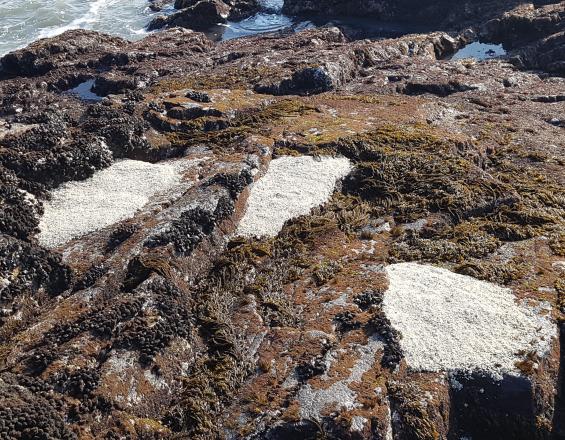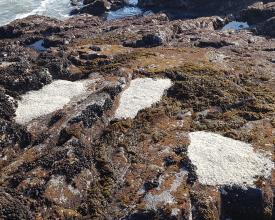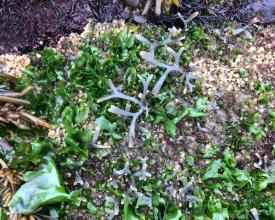
Un substrat adhésif artificiel rétablit les habitats d'algues marines en Corée

En utilisant un biopolymère composé d'extrait de ricin mélangé à du sable pour produire un substrat adhésif, des habitats d'algues ont été restaurés avec succès sur les rives du parc national de Dadohaehaesang, en République de Corée.
Les écosystèmes côtiers de la République de Corée ont subi de nombreux changements, notamment le déclin des communautés d'algues. Pour aider à répondre à ces préoccupations, le Service des parcs nationaux de Corée (KNPS) a lancé un projet pilote à Namdong-ri, Jindo-gun en 2017.
Le projet visait à créer des habitats nourriciers dans lesquels les algues pourraient s'établir naturellement. Pour ce faire, il a utilisé un biopolymère à base d'extrait de ricin, qu'il a mélangé à du sable pour produire un substrat adhésif. Ce substrat a ensuite été placé sur des zones de roches nues dans la zone intertidale. Les habitats d'algues existants dans la zone intertidale ont été maintenus tels quels ; le substrat adhésif n'a été utilisé que dans les espaces vides où les algues n'avaient pas colonisé.
Impacts
Une étude de suivi des sites pilotes a montré que 13 espèces d'algues, telles que Ulva pertusa et Sargassum fusiforme, s'étaient établies avec succès. L'étude a également montré que le substrat artificiel supportait une biomasse plus importante que le substrat rocheux naturel.
Le substrat se caractérise par sa surface rugueuse, qui permet aux algues de s'y fixer plus facilement que sur le substrat rocheux naturel. Il présente également une bonne résistance aux vagues. Dans l'ensemble, les résultats du projet pilote suggèrent que le substrat agit comme un biofilm, permettant aux algues d'adhérer plus facilement à la surface des rochers et réduisant le temps nécessaire à la restauration.
Sur la base des résultats du projet pilote, KNPS a maintenant étendu ses efforts et utilisé des substrats adhésifs sur quelque 4 000 mètres carrés dans 85 habitats d'algues différents, en coopération avec les résidents locaux sur la côte du parc national de Dadohaehaesang.




